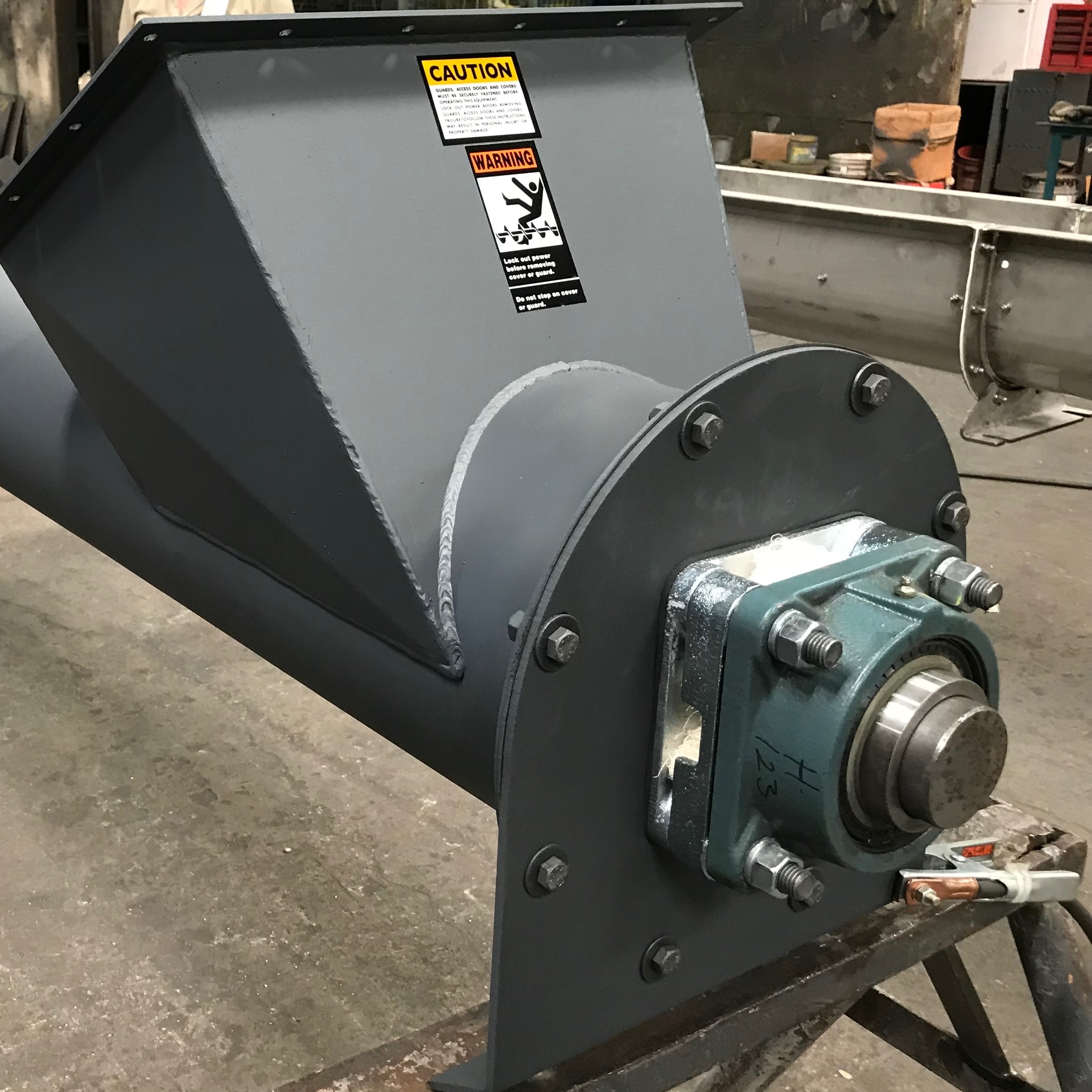A screw conveyor uses several different types of shafts to function and even the term shaft can be misleading to many. Below are some examples of different screw conveyor shafts and even clarification on what a screw conveyor shaft is.
Screw Conveyor Shaft
Screw conveyor shaft seems like an easy enough term to define but many people use this term incorrectly which can lead to a confusion when discussing screw conveyor design. When we say screw conveyor shaft, we are referring to the solid shafts inserted and bolted into the center pipe of the screw. Many people refer to the screw center pipe as the shaft but it is just simply called the pipe since it is made of common sch. 40 and 80 pipe.
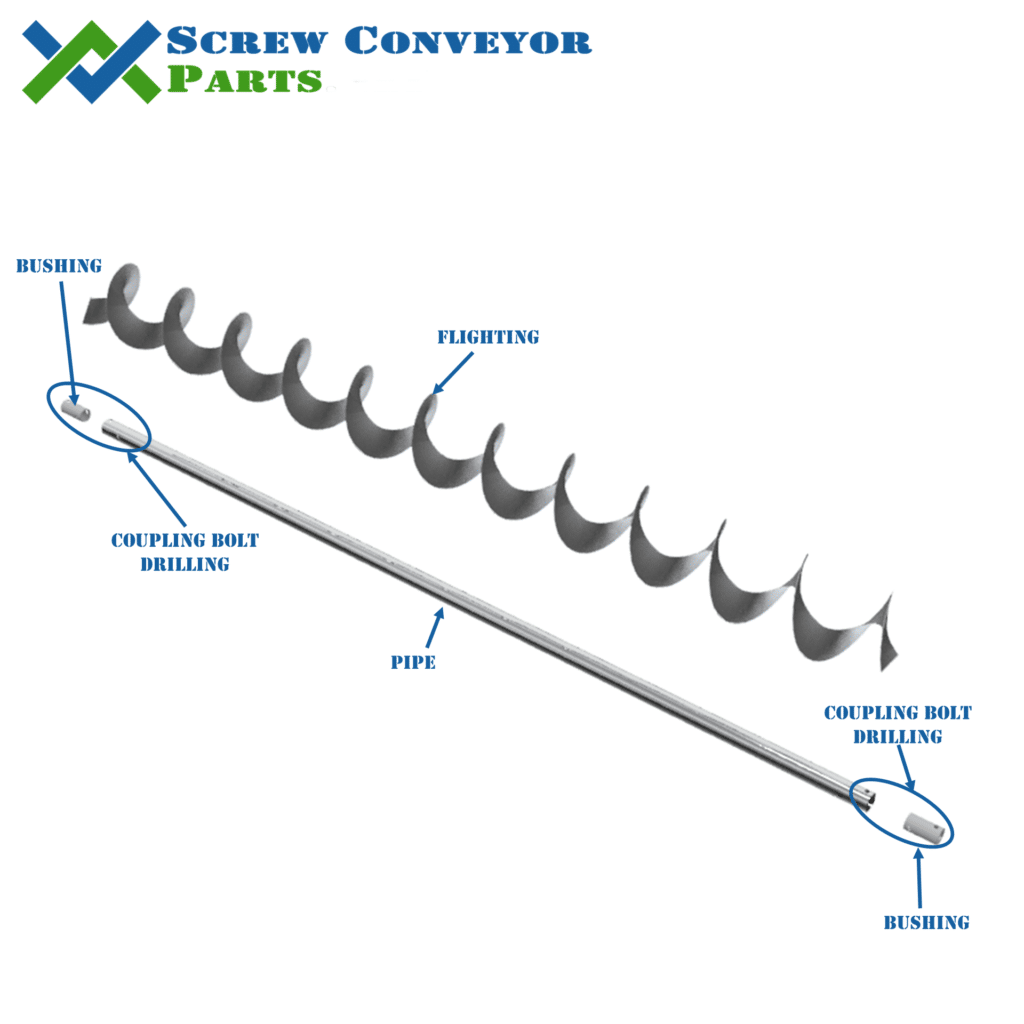
Screw Conveyor Shaft Terminology
Diameter
Screw conveyor shaft diameter refers to the outer diameter of the shaft. For screw conveyors, the diameter will be one of the CEMA standardized sizes; 1 1/2″, 2″, 2 7/16″, 3″, and 3 7/16″.
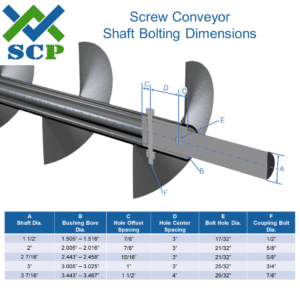
Bolting
Screw diameter shaft bolting refers to the number of coupling bolts used to attach the screw pipe. Standard bolting is two coupling bolts (2-bolt) at 90deg to each other although three coupling bolts (3-bolt) is very common, too. Screw conveyor coupling bolt size and spacing is standardized based on the shaft diameter mentioned above to ensure a certain bolting and diameter shaft will fit any screw pipe with the corresponding shaft diameter and bolting.
Hardened
A hardened screw conveyor shaft is a carbon steel shaft with a case hardened (exterior only) portion along its length. The hardened section is only the length of the shaft in contact with a hanger bearing or shaft seal and is only available in carbon steel shafts.
Material of Construction
Most screw conveyor shafts are made of a carbon steel bar, grades c1020, c1040 or c1045 or c4140. C1020 and c1045 are the most common because they are economical, strong, relatively hard, yet easy to machine. C4140 is a stronger alloy and used in cases where additional strength is needed. Other common screw conveyor shaft materials are 304 stainless steel and 316 stainless steel.
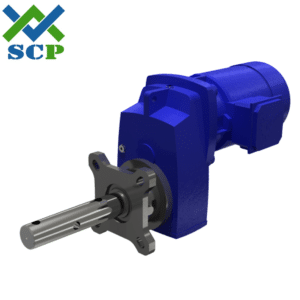
Drive Shaft
A screw conveyor drive shaft is the shaft connecting the motor and gearbox to the screw pipe. The drive shaft is usually very custom because ever gearbox has a different shaft connection. Several gearbox manufacturers make screw conveyor adapters which allow the gearbox to be directly bolted to the screw conveyor trough end and come with a drive shaft. A drive shaft can be hardened through the seal area to reduce shaft wear and increase service life. Drive shaft sizing is very important in custom screw conveyor applications because the stress can be very high due to the combined torque, bending, turndowns, shoulders, length and other design features. Improperly engineered driveshafts can lead to unexpected downtime if a failure happens.
Coupling Shaft
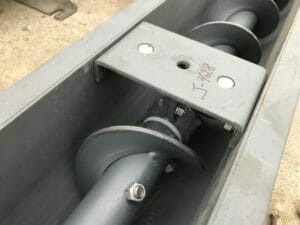
A screw conveyor coupling shaft is the shaft connecting one section of screw to another. Coupling shafts usually ride on a friction bearing inside a hanger to suspend the screw off the bottom of the trough and allow the screw conveyor to span great distances. Some coupling shafts are hardened to ensure the hanger bearing wears before the shaft. This is common when using a hard iron hanger bearing. Coupling shafts are uniform in diameter and can be made with 2-bolt or 3-bolt connections. Another type of screw coupling shaft is a close coupling shaft (CCC). They are used to connect two screws together without a hanger. This is a popular option for screw conveyors conveying wet or oily bulk materials like in a rendering plant. Coupling shafts are a little easier to design since there is no torque and usually made of a straight piece of shafting.
Tail Shaft
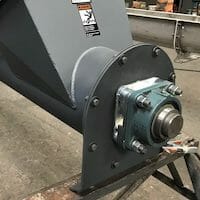
A screw conveyor tail shaft is the shaft at the end of the screw conveyor, opposite the drive shaft and is used to support the screw. The tail shaft is supported by either a flanged or pillowblock bearing. A tail shaft can be hardened through the seal area to reduce shaft wear and increase service life. Tail shafts are uniform in diameter and can be made with 2-bolt or 3-bolt connections. Tail shafts are a little easier to design since there is no torque and usually made of a straight piece of shafting.

